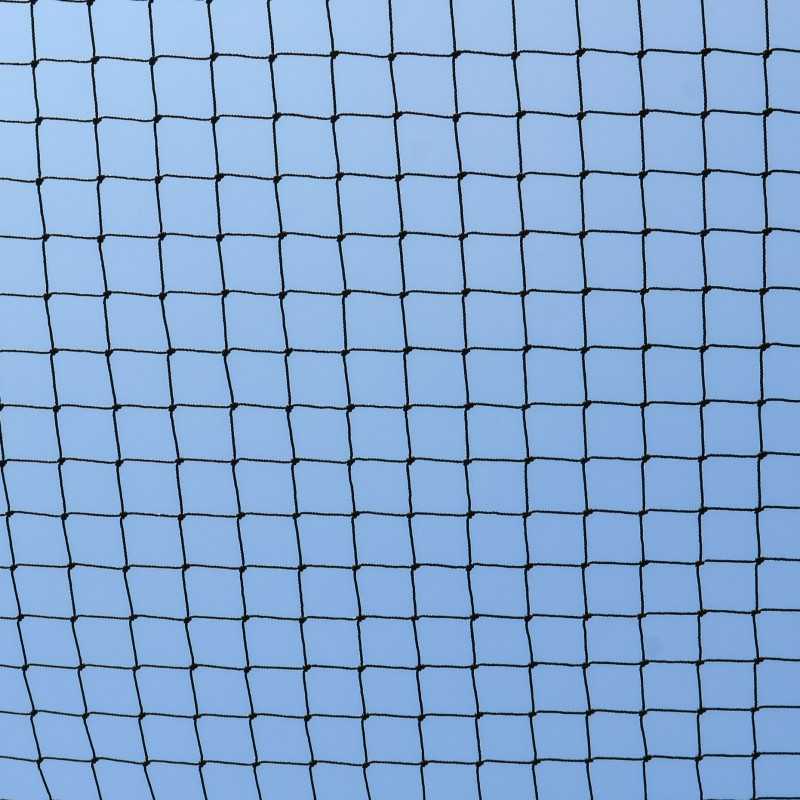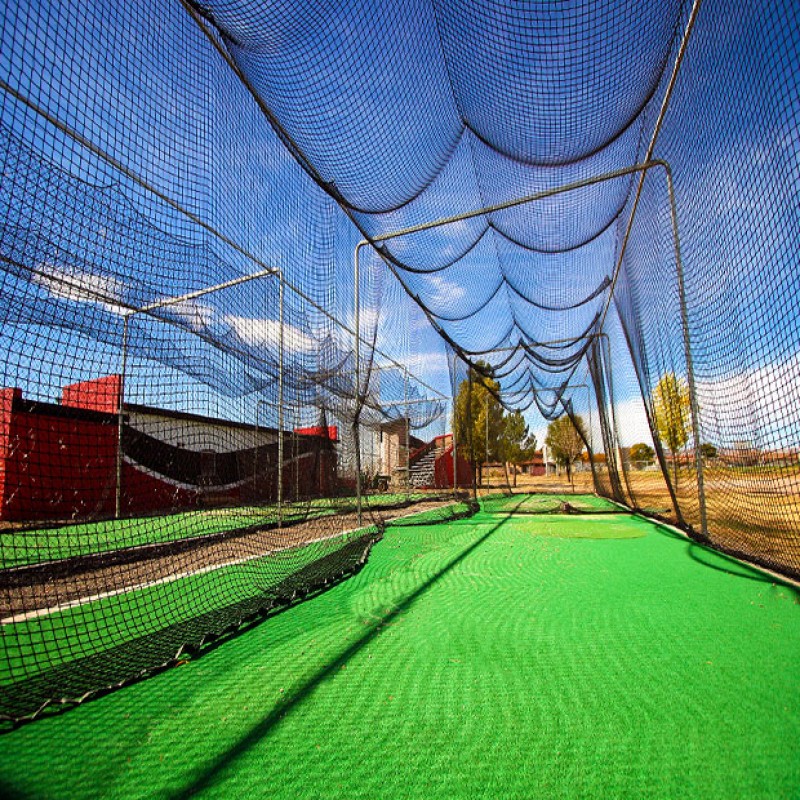| Item Name | Baseball Practice Cage Nets |
| Item No. | HX1501 |
| Material | PE |
| Color | Black |
| Size | 55ft*12ft*12ft |
| Mesh Size | 1 7/8in (Knotted) |
| Twine Diameter | 2.7mm |
| Others | Custom nets and accessories are available. |
Weihai Huaxing Nets provide high quality Baseball Practice Cage Nets for all over the world. All the above dimensions can be customized.
Specifications:
Cage size: 55ft*12ft*12ft
Netting color: black
Netting material: Polyethylene/PE
Twine thickness: #42(2.7mm)
Mesh size: 1 7/8in (Knotted)
Description:
Nylon If you have an indoor cage, and durability and break strength is more important than budget, nylon netting is right for you. Nylon has the strongest break strength, and is by far the most durable netting for indoor use. Nylon has excellent resistance to abrasion, and outstanding overall durability. However, nylon is expensive.
Because nylon netting can absorb water, many manufacturers treat the nylon with some sort of bonding agent by either dipping or spraying the twine. Although treating nylon with a bonding agent will dramatically reduce nylon’s tendency to soak up water, it doesn’t stop it entirely. Eventually, nylon will likely shrink and rot.
When compared with polyethylene netting, nylon is initailly stronger than polyethylene, but deteriorates faster. Nylon loses between 15% and 20% of its strength each year depending on conditions. For year one, a #36 nylon will have a greater break strength than a #36 polyethylene, but depending upon weather conditions, by the end of the third year polyethylene may be as strong, and KVX200™ may be stronger.
Although nylon netting has a high initial break strength, if left outside that strength can deteriorate rapidly. Nylon absorbs water and loses strength in direct sunlight. For indoor applications, nylon is an excellent choice. If your netting will be exposed to adverse weather, consider polyethylene or KVX200™.
Polyethylene Polyethylene netting is inexpensive and does not deteriorate as quickly due to moisture. As the netting is exposed to moisture, polyethylene retains a higher percentage of its strength than nylon. Polyethylene does not absorb water, so the problem of rotting and shrinkage disappears.
Polyethylene netting has drawbacks as well. Most blends of polyethylene don’t hold up well to direct sunlight. Not all polyethylene cages incorporate UV inhibitors. Ours do. This works well for indoor application, but it may not be practical over extended periods of outdoor use, especially in warmer climates.
Benefits:
Square Hung Batting Cage Net.
Designed for consistent outdoor use.
Be robust and reliable for years to come.
HDPE knotted nets with UV protection are rot-resistant.
Long edges of the netting are overlocked to prevent fraying and further increase durability.
Please contact us for more details and samples.


